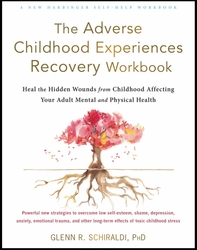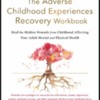In recent years we’ve learned that disturbing neural pathways imprinted in childhood shape the development of the brain in ways that cause suffering well into adulthood—if old troubling neural patterns are not reworked.
For example, toxic stress from adverse childhood experiences (ACEs) can cause the developing brain to remain on high alert by stimulating the epigenome to alter normal gene expression. ACEs can imprint disturbing neural pathways in the brain. The more continually these pathways fire—typically beneath conscious awareness—the more trouble they cause. Think of treading a footpath through a meadow. The more the path is used the more entrenched the footpath becomes. What would happen, though, if we were to forge a more pleasant footpath? Pretty soon people would prefer to use this new pathway. Repeated use would more strongly embed the new footpath, while the old pathway would become overgrown through disuse. Neuroscientists call the weakening of unused neural pathways in the brain dendritic pruning.
Attachment Disruptions
Attachment disruptions in the first three years of a child’s life are particularly disturbing because the brain is undergoing a tremendous growth spurt then. Perhaps the primary caregiver, preoccupied by stress (e.g., divorce, illness of another family member, or an unfaithful or abusive spouse), was unable to provide the sense of being loved, safe, and enjoyed that every infant needs. Perhaps the caregiver’s angry tone of voice or disgusted look registers wordlessly in the child’s developing brain. The disturbing neural pathways that become imprinted can affect the brain’s development, the way adults experience themselves, and mental health and stress reactivity in adulthood.
How Imagery Heals the Emotionally Wounded Brain
Imagery strategies strengthen and stabilize the brain by laying down new neural pathways that begin to replace the old neural pathways. These new neural pathways calm the brain and provide a new sense of security. (Later we’ll explore ways to directly rewire the old unpleasant memories.)
Recall that ACEs memories primarily reside not in the verbal, thinking left brain but in the visual right brain, with its strong connections to the emotional and survival regions of the brain. Imagery strategies not only imprint new images, but also introduce calming emotions, bodily sensations, and reactions—and new, more pleasant ways of experiencing oneself.
Three Types of Imagery
The brain and its epigenomes are plastic, meaning they are malleable. Three types of imagery can favorably impact them.
1. Attachment Imagery. Fond memories of warm emotional bonds with affectionate caregivers favor the development of emotional and physical well-being in adulthood. But what if individuals lacked such experiences in childhood? Left-brain Insights and understanding are rarely sufficient to heal such wounds, but imagery that simulates ideal, nurturing attachment experiences often can.
For example, picture and sense this mother-child imagery. You first use previously learned skills to relax your body and mind. Then you imagine yourself as a newborn infant, sensing that your mother is happy, confident, at peace, trusted, playful, and fully present. Her movements are rhythmic and predictable, and her vocal sounds soothing. You can tell that she enjoys being with you. She confidently and warmly picks you up, caressing you, kissing you, enjoying the feel of your soft skin as you enjoy the touch of her warm skin against your cheek. She smiles and gazes lovingly into your eyes as your eyes meet. You know from repeated encounters with her that she is available, responsive to your needs, and will not abandon you. And you feel calm, cherished, content, secure—that you belong.
A similar exercise is to imagine being in the presence of two primary caregivers, such as mother and father, who enjoy each other’s company and who cherish you and show this by their gestures, tone of voice, facial expressions, and loving and welcoming verbal expressions (such as, “Welcome to our home; we are so glad you’re here”).
You can even imagine being in-utero during the last trimester of pregnancy that is so important to the developing fetus, sensing that your mother is content with her life, calm, secure, humming a soothing melody, smiling, and looking forward to your arrival—which makes you feel calm, secure, and content. And you sense that in your body.
Attachment imagery relative to the teen years can also be very helpful. In this strategy you imagine yourself as a teen, hearing and sensing verbal messages from your caregivers that you needed to hear then, such as, “We love you just as you are; we enjoy being with you; we’re pleased with the way you are developing into a capable, responsible adult; we trust you.”
2. Self-nurturing imagery. This instills the pattern of being supportive and encouraging to yourself, rather than harshly critical and punitive. Imagine that you as a grown-up are now stronger, wiser, and kinder—and have a deep intention to take care of the infant you were back then (the infant, of course, represents your core self). The grownup is imperfect and has made mistakes, but the infant doesn’t care about that. The infant only cares that you are now loving and fully present—and feels calmed by your relaxed confidence and natural, rhythmic ease of movement. You cradle the infant, who relaxes, feeling loved, protected, enjoyed, and safe in your presence. There is a sense of oneness. The infant knows that the wise adult will always protect and care for that little developing being. The adult enjoys the feeling of nurturing and protecting that beloved little one.
Another self-nurturing exercise is comforting Imagery for difficult times. Here you, the adult, travels back to a very difficult time and provides what the younger self needed then—such as physical protection, encouragement, a tender touch or embrace, or counsel.
3. Exploring imagery. This replaces anxiety with a sense of confidence, security, and adventure. In this imagery the toddler you once were is supported and encouraged either by loving caregiver(s) or the wiser adult that you now are. The adult(s) takes joy in, and trusts, the toddler’s attempts to discover and explore the world. The child knows he/she can return to the loving embrace of the caregiver(s) whenever a sense of security needs to be replenished.
Conclusion
The repetitive practice of imagery skills can strengthen and stabilize the brain, forging new neural pathways that begin to offset troubling old neural pathways. These skills, combined with the skills we’ve explored previously (to strengthen the brain, regulate stress arousal, and calm distressing emotions), all lift the mood and prepare the brain to directly rewire the disturbing memory circuits that result from ACEs. The next blog will explore how old disturbing memories are reworked.
_______________________________
This post first appeared in Psychology Today on April 11, 2022.
Reference
Schiraldi, G. R. (2021). The Adverse Childhood Experiences Recovery Workbook. Oakland, CA: New Harbinger.
About the Author
Glenn R. Schiraldi, PhD, has served on the stress management faculties at The Pentagon, the International Critical Incident Stress Foundation, and the University of Maryland, where he received the Outstanding Teacher Award in addition to other teaching/service awards. His fourteen books on stress-related topics have been translated into seventeen languages, and include The Adverse Childhood Experiences Recovery Workbook, The Self-Esteem Workbook. The Resilience Workbook, and The Post-Traumatic Stress Disorder Sourcebook. The founder of Resilience Training International (www.ResilienceFirst.com), he has trained laypersons, emergency responders, and clinicians around the world on the diverse aspects of stress, trauma, and resilience.
Photo Credit: ookawaphoto/istockphoto




Comments (0)